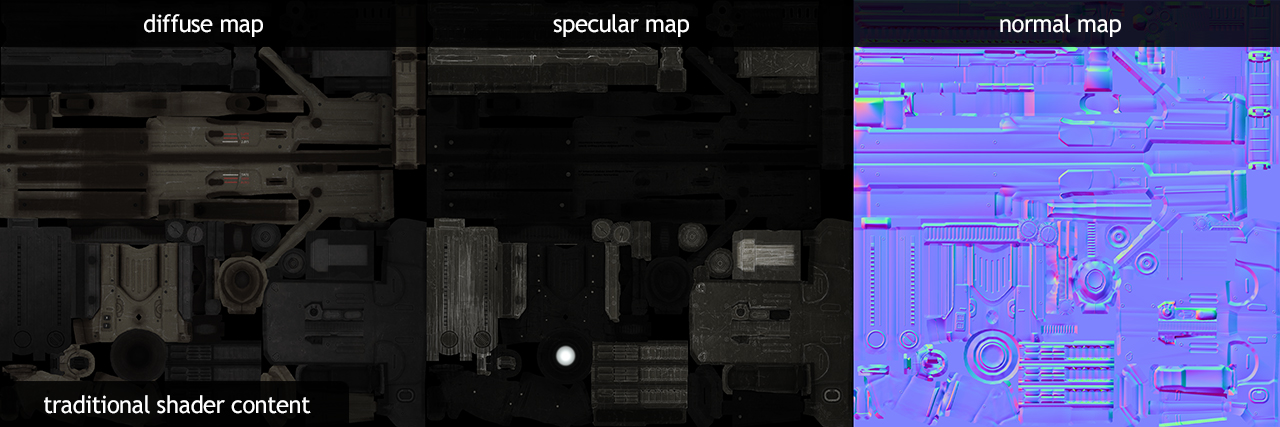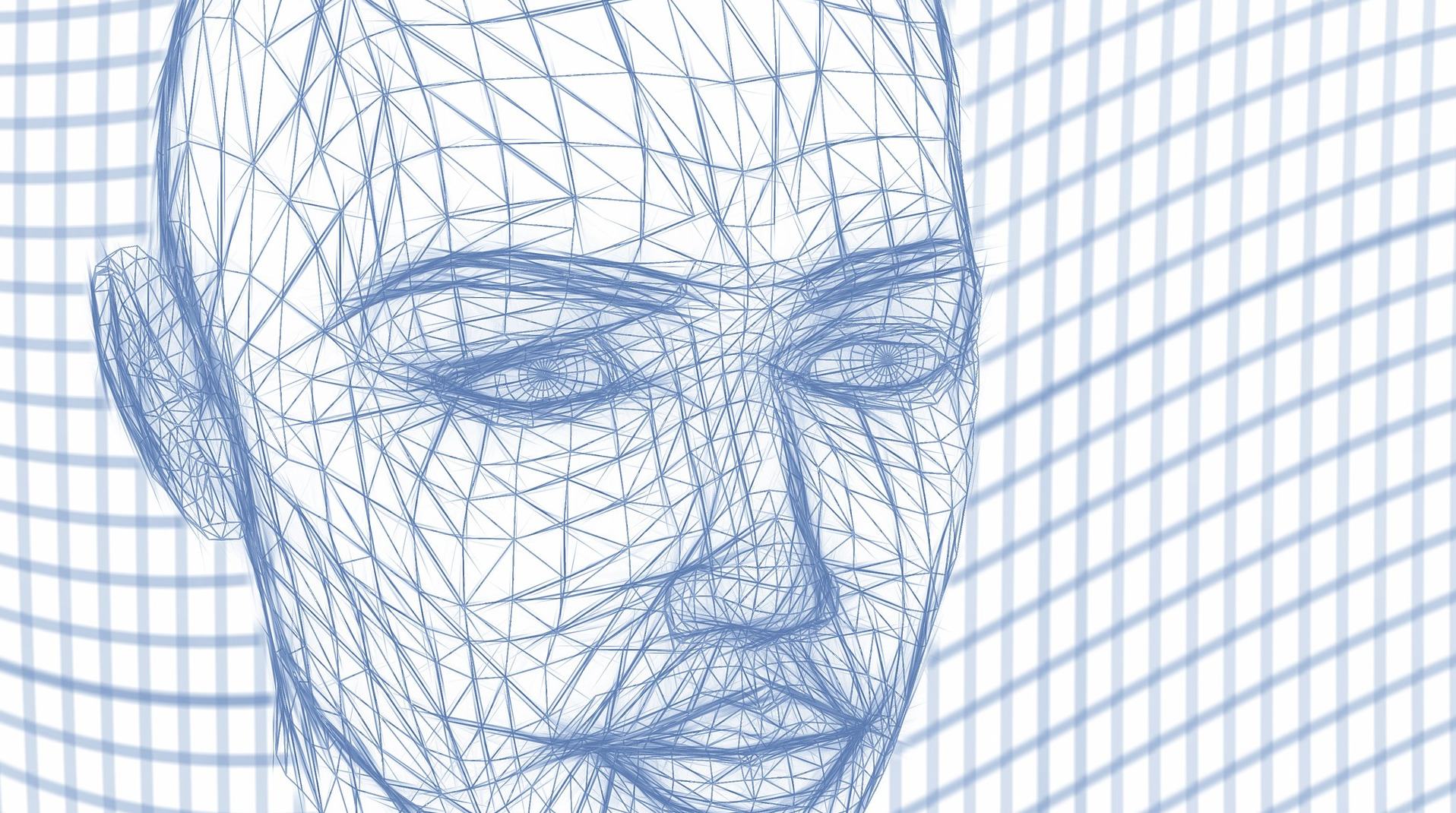

The preferred method is the use of a high resolution model that can be used to "bake" the details into the normal map of a lower-polygon model inside programs such as Blender and 3ds Max. There are many methods and tools to create normal maps. The normal map is how light reacts to the surface of a model giving it fake bumps and groves with high areas being lightly colored and low areas being darker which is controlled by the values of the color used (typically a light violet/blue color). Using the same colour on the specular as on the diffuse will result in a more saturated highlight when viewed in the game. If you need a more "neutral" highlight on a surface, your specular map should use the opposite of the diffuse map's colour. A very saturated specular map will have a very different visual effect than a grey specular map. The colour of a pixel is also used, to calculate the resulting colour of the surface. The whiter a pixel, the shinier the surface will appear in-game, meaning surfaces such as stone or old wood tend to have a very dark specular map, while surfaces like silver or plastic would tend to have lighter specular maps.

Specular maps are used to define an objects shininess and highlight colour. To update the path, please read this tutorial: How to fix hard-coded texture paths in NIF files. If the texture cannot be found using the path inside the NIF, the game may crash or the object will appear pink. The name of the texture and its path is controlled inside the NIF file using the texture path.

The diffuse texture is how the object is wraps around the model based on the defined UV map of the model. (Menu/2D items do not require normal maps) "color map" or just plain "texture"), specular (shininess), normal (a.k.a "bump map") and glow maps.Įach model must have two textures.a diffuse texture and a normal map. So, by using this converter tool you may use the generated IOR map from the specular one directly in the render engine IOR slot you have a much simpler material node graph and faster render time.There are 4 kinds of textures, the diffuse (a.k.a. which usually does not include an IOR map and comes with Specular map. In render engines like V-Ray or Corona Renderer (version 6 and earlier) using the specular map is not easy you must convert the map using several nodes which may take a while especially if you want to create several PBR material from different texture providers like Arroway Textures, CG Axis, Poliigon, Texture Haven and etc. Using this Specular to IOR texture converter, creating PBR materials in render engines that do not support Specular slot (so use IOR instead) would be a much more convenient experience with an expected good-looking result. This little command line program makes it easy to convert Specular to IOR using a well-known formula that has been used in the CGI community and apps through these years.


 0 kommentar(er)
0 kommentar(er)
